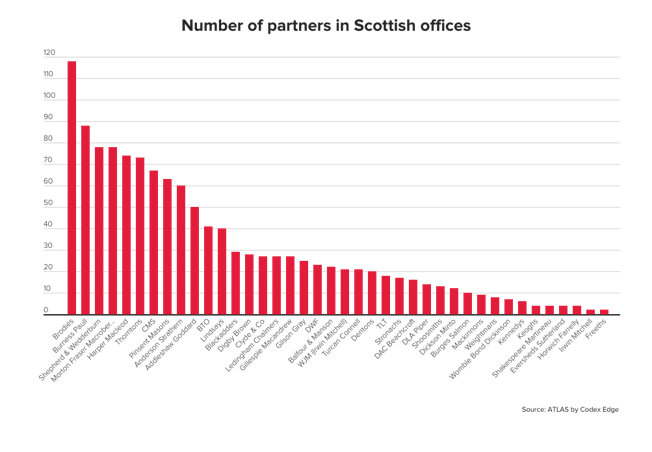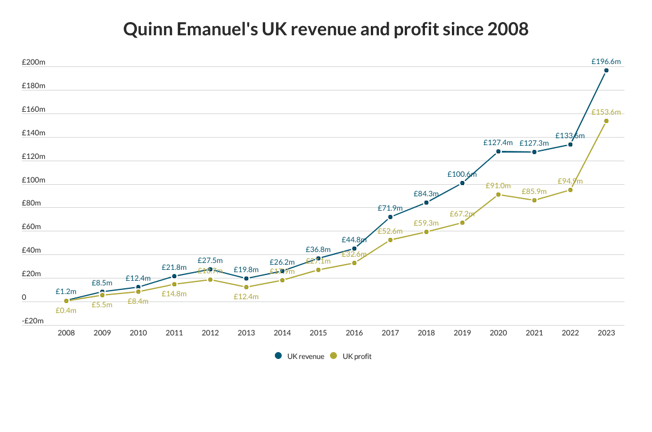Despite positive noises regarding London prospects, the past year has been just as tough on the big US players as it has on their domestic rivals

The financial data for the top 30 US firms paints a bleak picture of the legal industry in 2009, with a total of 21 firms posting year-on-year losses at their London offices.
It is a long away from the figures published by The Lawyer last year. Back then almost half of the top 30 firms saw their London revenues rise from their 2007 positions, while all but two increased their global revenues.
In 2009, of the top five firms, only Latham & Watkins managed to increase London revenue, up from $150m in 2008 to $151.1m in 2009.
Those with a heavy focus on corporate/M&A and finance suffered the most, while the few success stories were from those firms geared toward restructuring and other countercyclical activities.
Onwards and upwards
Most US partners contacted by The Lawyer were eager to move on from what was a dismal 2009. Most believed things could only improve during the coming year.
White & Case, which focuses heavily on the finance sector, was one of the most extreme examples: its London revenue dropped by 19 per cent to $197m, while global revenue fell by 10.5 per cent to $1.3bn.
Despite the heavy drop the firm maintained its number one position in London, underlining how poorly many of its competitors had fared.
White & Case London head Oliver Brettle points to the decline in client activity and a consequent decline in instructions.
“There was a very marked fall in the period running from September 2008 to around February 2009, and a gap between transactional activity slowing down and restructuring work picking up, which didn’t really get going until the spring of 2009,” says Brettle. “Just as the downturn hit us quickly, so things have improved quicker than expected, and we’ve experienced a month-on-month improvement in business from May 2009 onward.”
Emerging markets
Brettle believes one factor that will help US firms in London is the City’s importance to the emerging markets.
White & Case is keen to step up its operations in the Middle East, where it has been hit by a number of departures, and already has a successful office in Kazakhstan.
“Looking at the Middle East, we need to have a larger presence on the ground and simply increase the number of White & Case partners in the region and make sure the practice is aligned with the rest of the firm,” he says. “We’re supported by major clients in the region and we’ve reacted quickly; that’s gone well with our clients because they can see the steps we’re taking.”
Lawyer numbers at White & Case in London fell from 427 to 301, while partner numbers shrank from 73 in 2008 to 63 in 2009. Brettle claims the firm is now eager to rebuild its team.
“We went through the pain of an internal reorganisation but are now very well-placed going forward,” he contends. “We’re looking to bring in more people and are actively searching for partners across our practice areas, with a particular focus on banking and finance and corporate/M&A. We expect modest, sensible expansion this year.”
Another firm hit hard by the recession was Baker & McKenzie, a firm with a June to July financial year. London revenue fell by 24 per cent, from $244m to $184.5m (based on an average exchange rate of $0.62696 to £1).
Its global revenue also took a hit, dropping from $2.19bn to $2.08bn.
But like most of the partners contacted by The Lawyer, Bakers London managing partner Gary Senior remains upbeat.
“We’ve held up very well in what was a difficult year post-Lehman,” he maintains. “UK figures are down quite a bit and PEP was also significantly down, but frankly that was inevitable and in line with the market. Overall we’re satisfied, but it certainly was a difficult year.”
So have things improved since?
“It definitely has in the UK,” Senior insists. “We’re definitely doing better than we did last year and revenues are holding up very well.”
Senior sees financial services as one of the future growth areas in London and, much like White & Case, the firm is looking to boost its headcount, particularly in Europe and the US.
Top lite
Senior believes one factor contributing to the struggles of some US firms is a lack of leadership in London, particularly at firms without UK-based managing partners.
“I think it’s a mistake for US firms not to have a proper management structure in place,” Senior argues. “London’s a complicated marketplace. If you want to be serious in London you need to have a visible management presence; that’s been a model of ours and I think that’s why we’ve grown.”
Senior’s comment is unlikely to be a direct dig at any firm in particular, but it is interesting to note that the firm with one of the largest revenue drops last year, Dewey & LeBoeuf, is also one that until recently insisted on running its City operation without a full-time London managing partner.
Another firm that saw its London revenue decrease was Kirkland & Ellis, which posted a drop of 7.1 per cent to $80.8m in 2009, although its global revenue bucked the trend with a 2 per cent hike to $1.49bn.
“I think 2009 was an interesting year,” says Kirkland London head Jim Learner. “We probably fared better than most due to our restructuring practice.
“There wasn’t a lot of new deal activity in 2009, but between the restructuring and Chapter 11 side, our people in the US and Europe have been kept busy.”
The firm is increasingly involved in white-collar criminal litigation on both sides of the Atlantic and intends to expand its transactional and private equity capabilities in Asia.
But Learner says it is unlikely that Kirkland will shift its strategy in London.
“We’ll stick to our core practices,” he states. “I think the focus will continue to be on private equity, corporate restructuring, white-collar litigation and IP litigation, which is more of a US focus.”
Brisk easterly
While balance sheets were hit hard by the slowdown in the commercial sector and the dearth of M&A and private equity, this was partially offset by an increasing amount of countercyclical work.
Firms were quick to beef up their capabilities in restructuring and insolvency, although many reported that litigation was not as active as expected.
The market has also been characterised by increasing interest in Asia and the Middle East, with firms moving to build up their capabilities in these regions.
One such firm is Weil Gotshal & Manges, where global revenue held steady at $1.23bn but London revenue suffered a considerable decline, from last year’s reported $103m to $85m.
The firm opened recently in Beijing, alongside its offices in Hong Kong and Shanghai, and this is clearly a key area of future investment.
“Around 20-25 per cent of our lawyers are in Europe; Asia’s a major market and the numbers should be nearer to Europe,” says Weil London managing partner Mike Francies. “If we get it right it should be a lot bigger. We’re just dipping our toes at the moment.
“It’s too big to miss out on and I’d be surprised if we didn’t see more investment.”
Ready for the upturn
Weil, though, faces a dilemma familiar to other US firms in London: how to prepare for the upturn.
“From our point of view I feel we’re ahead of other firms because of our restructuring brand and how we’ve extended that into Europe,” states Francies. “It’s now a question of how we leverage the advantages we’ve made during the downturn.
“We have a lot of contacts and when the market comes back we’ll have more corporate clients. There’s talk of green shoots this year, but I’d be surprised if there’s a huge pick-up in work. When the upturn does come, it’s then that we’ll find out if we’ve leveraged the brand like we think we have.”
Paul Hastings Janofsky & Walker was one of the few success stories of 2009, breaking into the top 30 on the strength of its restructuring practice and work with commercial mortgage-backed securities, areas enhanced significantly by its capture of seven partners last year from Cadwalader Wickersham & Taft (which has dropped out of the top 30 on revenue).
“We like to think we’re recession-proof,” beams Phil Feder, managing partner of the firm’s London office. “I think it’s down to our pre-existing knowledge and experience in the restructuring area and being flexible in dealing with troubled assets – we’re experts in those areas.
“I believe that’s why firms like us and Weil and Bingham have done well.”
Bank managing
Feder is another managing partner who is highly optimistic about 2010. He believes one factor that will play in US firms’ favour is the fact they have less involvement with the major UK banks than their magic circle rivals.
“Banks in the UK are holding back and not doing much,” he says. “US firms, on the other hand, are more involved with smaller investment banks and opportunity funds, where there’s more activity.”
Smart and steady growth is key, Feder says, if Paul Hastings is to avoid the internal restructuring seen at other firms.
“We’re confident that the economy is on the upswing,” he adds. “The UK has its issues with the election and with the problems that may or may not produce, but we’re prepared to look very seriously at the areas of corporate/M&A, capital markets and finance. Generally we think now is the right time to invest.”
No doubt US firms will be hoping their clients share Feder’s optimism.
Click here to view our International firms in London Special Report
TOP 30 US FIRMS IN LONDON BY REVENUE
(Click image to view large version)

































Latham & Watkins laid off hundreds of associates and staff without cause.
They even laid off half the first years only four months after they started.